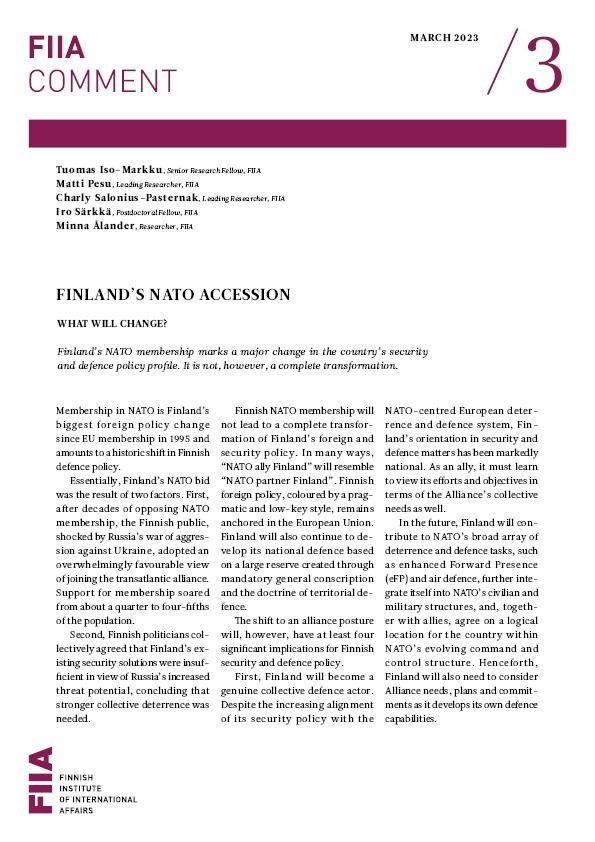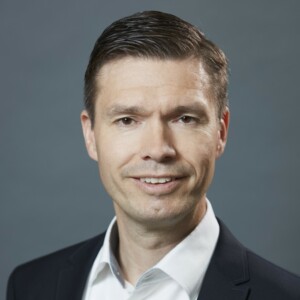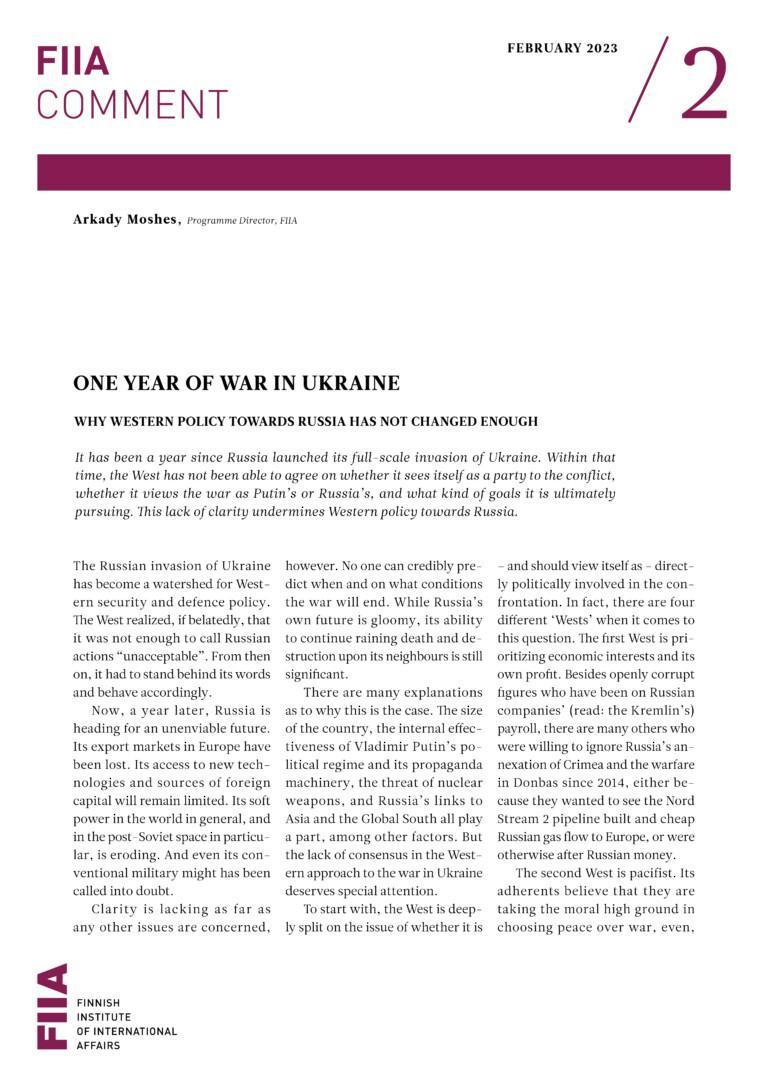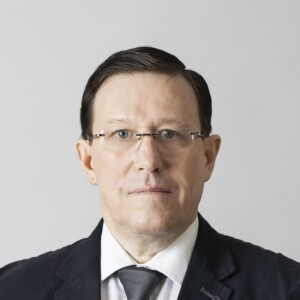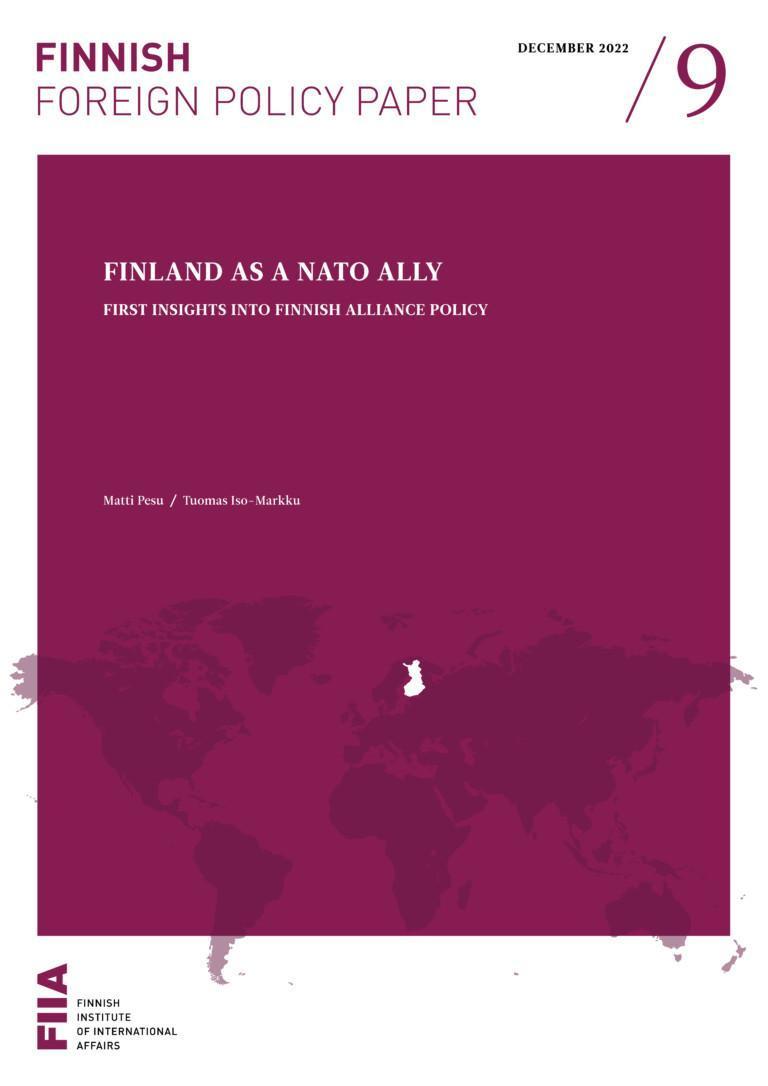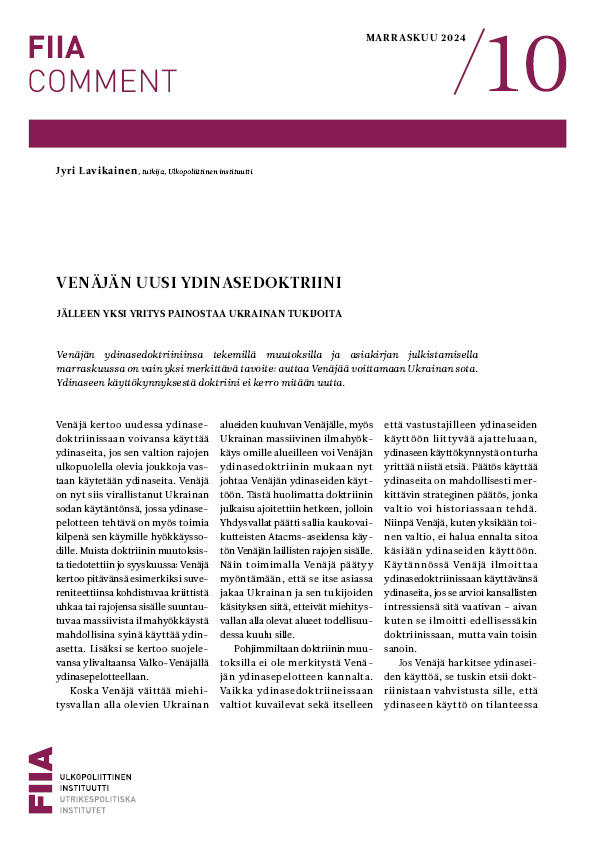Finland’s NATO membership marks a major change in the country’s security and defence policy profile. It is not, however, a complete transformation.
Membership in NATO is Finland’s biggest foreign policy change since EU membership in 1995 and amounts to a historic shift in Finnish defence policy. Essentially, Finland’s NATO bid was the result of two factors. First, after decades of opposing NATO membership, the Finnish public, shocked by Russia’s war of aggression against Ukraine, adopted an overwhelmingly favourable view of joining the transatlantic alliance. Support for membership soared from about a quarter to four-fifths of the population. Second, Finnish politicians collectively agreed that Finland’s existing security solutions were insufficient in view of Russia’s increased threat potential, concluding that stronger collective deterrence was needed.
Finnish NATO membership will not lead to a complete transformation of Finland’s foreign and security policy. In many ways, “NATO ally Finland” will resemble “NATO partner Finland”. Finnish foreign policy, coloured by a pragmatic and low-key style, remains anchored in the European Union. Finland will also continue to develop its national defence based on a large reserve created through mandatory general conscription and the doctrine of territorial defence.
The shift to an alliance posture will, however, have at least four significant implications for Finnish security and defence policy.
First, Finland will become a genuine collective defence actor. Despite the increasing alignment of its security policy with the NATO-centred European deterrence and defence system, Finland’s orientation in security and defence matters has been markedly national. As an ally, it must learn to view its efforts and objectives in terms of the Alliance’s collective needs as well.
In the future, Finland will contribute to NATO’s broad array of deterrence and defence tasks, such as enhanced Forward Presence (eFP) and air defence, further integrate itself into NATO’s civilian and military structures, and, together with allies, agree on a logical location for the country within NATO’s evolving command and control structure. Henceforth, Finland will also need to consider Alliance needs, plans and commitments as it develops its own defence capabilities.
Second, Finland will significantly deepen its existing military partnerships. Since Russia’s first invasion of Ukraine in 2014, non-treaty-based defence cooperation has constituted an important element of Finland’s defence policy, partly serving as a substitute for NATO membership.
With Finland’s NATO accession, the diverse cooperation formats involving countries such as Sweden, Norway, the United States, the United Kingdom, and Estonia (e.g., Nordic Defence Cooperation, NORDEFCO, and the Joint Expeditionary Force, JEF), will be reoriented towards operationally implementing NATO’s deterrence and collective defence in Northern Europe. Intensified regional cooperation offers the most feasible way to organize Northern Europe’s defence, given the Nordic-Baltic region’s large combined territory, small populations, and relatively limited resources.
This deepening of defence partnerships is already underway. Since April 2022, NATO member forces have been almost continuously hosted and have conducted collective defence-oriented exercises in Finland. In November 2022, Finland, Sweden, and Norway updated their trilateral Statement of Intent to strengthen operational planning in areas of common concern, especially in the northern parts of the three nations. In March 2023, another milestone agreement was concluded between the air forces of Denmark, Finland, Norway, and Sweden, with the four countries announcing their aim to operate their approximately 250 fighter jets as a joint operational fleet.
Third, Finland’s Russia policy will become increasingly deterrence-based. Traditionally, Helsinki has emphasized the importance of maintaining dialogue with Moscow. However, since February 2022, bilateral interaction has been limited to taking care of the necessary practical issues, such as border cooperation, and to keeping communication channels open – should a need to use them arise.
Finland’s Russia policy duly fits well with the Alliance’s three-pronged approach outlined in the recent Strategic Concept. Helsinki shares the view that NATO must strengthen its deterrence and defence for all allies, enhance resilience against Russian coercion, and keep communication channels with Russia open to increase transparency and mitigate potential risks.
Fourth, going forward, Finland will be covered by the Alliance’s nuclear umbrella. This will introduce a new track to Finland’s approach to nuclear weapons. In addition to promoting nuclear arms control, Finland must develop a view on nuclear deterrence and determine its involvement in shaping NATO’s nuclear policy. This could amount to playing an active role in the Nuclear Planning Group or to taking operational responsibility in the Alliance’s conventional actions that support nuclear deterrence.
Overall, Finland’s NATO membership will require significant cultural changes at societal, political and military levels – a process that will take years. Finland's NATO profile will develop and evolve organically as the country positions itself on issues on the Alliance's agenda, and as it sets its fundamental NATO objectives in future foreign, security and defence policy reports.
Ultimately, through its NATO membership, Finland will jettison those aspects of its security policy that no longer meet the demands of the increasingly turbulent international security landscape, while retaining those that have served it well throughout its independence.
